- +1 800 433 4609
- |
- Request Info
PWV Analysis Introduction
The primary cause of death and fatal illness in men and women is cardiovascular disease (CVD). In 1948, the Framingham Heart Study, under the direction of the National Heart, Lung and Blood Institute (NHLBI) began research into the factors and characteristics that contribute to CVD. While the tools and extent of analyses were limited at the time, pulse wave shape was an important parameter collected during the study. Researchers found that a visual inspection of the waveform patterns accurately correlated with an increased risk of developing CVD.
Researchers at the St Thomas hospital recently revisited this striking observation. The St. Thomas group elaborated on the initial findings to demonstrate that finger volume pulse derived from a digital photoplethysmographic probe is directly related to the radial and brachial artery pressure pulse.
Pulse is created when the heart pumps and propagates blood through the arteries. The first component of the Digital Volume Pulse (DVP) waveform (i.e. the systolic component, shown below in blue) results from the direct propagation of pulse from the aortic root to the finger. While the pulse travels down the arm, direct pulse pumps along the aorta to the lower body. This causes arterial diameter changes and bifurcations which result in part of the pulse being reflected back. These reflections culminate in a single wave reflection from the lower body that travels up the aorta then down to the finger, forming the second DVP component (i.e. the diastolic component, shown below in green). The arm acts as a conduit for both the directly transmitted wave and the reflected wave thereby having little impact on the DVP contour.
The DVP waveform contours are directly related to the large artery stiffness and vascular tone. As a result, characteristics of the DVP waveform may change based on these factors.

Pulse Wave Velocity (PWV)
We observe and measure Pulse Wave Velocity (PWV) in the arterial system during blood circulation. This physiological phenomenon provides important insight into changes in blood pressure, flow, velocity and profile. These changes in pulse wave can be used to classify arterial elasticity. See the diagram below for a detailed explanation:
S (Starting point of arterial pulse-wave)
Aortic valve opens; blood from left ventricle is expelled.
P (Percussion wave)
Wave caused from LV ejection that increase the arterial wall linearly.
T (Tidal wave)
Reflected wave from the small artery.
C (Incisura)
End-point of systolic phase, aortic valve is closed.
D (Dicrotic wave)
Reflective oscillatory wave occurred from the blood crash into aortic valve by blood pressure of aorta.
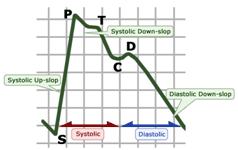
Cardiovascular disease and illnesses are directly related to the condition of the small and large arteries. Arterial stiffness and augmentation of the major arteries is a powerful precursor to potential health problems including heart failure, renal complications, sclerosis and heart attacks. Age and systolic pressure are the most important factors in increasing PWV. During the aging process, medical calcification and loss of elasticity in the arteries occurs. As a result, measuring PWV is useful for studying the effects of aging, vascular diseases, vase-dilating and vase-constricting agents on arteries
Pulse Wave Velocity Measurement:
• Quick and objective analysis of vascular system functioning
• Quantifies arterial stiffness and augmentation
• Provides insight into cardiovascular health
• Facilitates the monitoring of medication, treatments, lifestyle /diet
• Assists in management of disease progression
PWV Analysis
PWV Analysis is widely recognized by the European Society of Hypertension as integral to the diagnosis and treatment of hypertension (i.e. high blood pressure). There is a proven correlation between PWV and cardiovascular-related illness, events and death.
Arterial stiffness indexes (EEl, DDI and DEI) can suggest vital information to health care professionals. The test provides a quick and objective analysis of how your vascular system is functioning. This information is useful in informing and guiding your health care professionals (i.e. data may be used in deciding to pursue treatment prior to showing symptoms or clinical signs).
PWV analysis determines if the vascular system is working properly, without any limitations that may produce health risks. A healthy heart delivers oxygen and nutrients effectively throughout the body while pumping waste products to the kidneys, liver and lungs for removal. In order for this to occur, the arteries must be in good condition. Arteries may become atherosclerotic, arteriosclerotic, or hardened (having reduced elasticity and increased narrowing) over time. This change taxes the heart, valves, and arteries, which can lead to stroke, heart attack, kidney failure and/or sudden death.
Arterial stiffness caused by medial calcification and loss of elasticity (i.e. aging) is the most important factor contributing to an increase in PWV. Pulse wave velocity (PWV is an effective and highly reproducible measure for evaluating vascular endothelial dysfunction (i.e. the elasticity of the artery) and arterial stiffness.
Overview
Propagation of blood through the arteries occurs during a single heart systole. Blood travels through the arteries due to a transfer of kinetic energy from an area of expelled blood volume to potential energy of a stretched region of the vascular wall. Consequent changes take place in pressure, flow, velocity and profile. These changes are the physiological phenomenon known as pulse wave and can easily be observed and measured for use in analyzing arterial elasticity.
Correlations
Age is the most important factor contributing to increases in PWV. Arterial stiffness occurs due to the calcification and loss of elasticity that accompanies aging. Studies suggest that an increase in PWV may be a precursor to atherosclerosis development (as diabetes) while other research indicates no significant increase in PWV with age in subjects already predisposed to atherosclerosis (i.e. familial hypercholesterolemia). That being said, a qualitative association between the process of atherosclerosis and arterial rigidity has been established.
Research shows that hypertension, more so than atherosclerosis, contributes to an increase in age-related arterial stiffening.
While blood pressure is a valuable first-level indicator of hypertension, PWV provides further detail. PWV analysis measures the movement of the arterial wall by inducing movement through baroflex-induced pulse pressure.
Large artery damage contributes to the increase in cardiovascular illness and death rates observed in conditions such as hypertension. Arterial distensibility associated with this damage contributes to a disproportionate rise in systolic pressure and arterial pulsatility. These factors are associated to an increase in cardiovascular morbidity and mortality. Pulse wave analysis provides insight into arterial stiffness and distensibility which is valuable in the study of aging, vascular-related disease and agents which dilate or constrict arteries.
Patients suffering from diabetes mellitus and coronary artery disease often exhibit reduced arterial performance in non-occluded arteries.
During atherosclerosis, the artery walls tend to thicken, harden and narrow making them less effective at absorbing the energy from the blood pressure pulse. This, in turn, increases PWV.
Ascertaining the condition of major arteries is key to early diagnosis, treatment and prevention of cardiovascular-related illness. Analyzing arterial stiffness gives tremendous insight into potential health problems including heart attacks, heart failure, diabetes, and renal complications.
Measuring PWV using the finger probe
When the heart contracts, It produces a direct wave that travels down to the finger. This wave is reflected in the lower body and also travels down to the finger. It is this combination of the direct wave and reflected wave that is measured and recorded by the finger probe.

Digital Volume Pulse (DVP)
The first component of the Digital Volume Pulse (DVP) waveform (i.e. the systolic component) results from the direct propagation of pulse from the aortic root to the finger. While the pulse travels down the arm, direct pulse pumps along the aorta to the lower body. This causes arterial pressure changes which reflect the pulse back to the finger. The reflections culminate in a single wave reflection from the lower body that travel up the aorta then down to the finger, forming the second DVP component (i.e. the diastolic component). The arm acts as a conduit for both the directly transmitted wave and the reflected wave thereby having little impact on the DVP contour.
Measuring Digital Volume Pulse (DVP)
DVP is measured by transmitting infrared light through the finger. The amount of light absorbed is directly proportionate to the volume of blood in the finger.
A control system is in place to maintain the optimum level for measuring blood volume changes. This minimizes the potential for inaccurate signals due to vasoconstriction or poor perfusion.
Measuring Arterial Stiffness
The PWV System is highly effective at estimating arterial stiffness. Using the digital volume pulse data obtained from the infrared finger sensor, the PWV System determines the time it takes for pulse waves to travel through the arteries. The shape of the waveform derived from this measurement directly correlates to the time needed for pulse waves to travel through the arterial system. The speed by which the pulse travels through the arteries is directly related to arterial stiffness. Therefore, this measurement makes PWV a valuable and noninvasive tool for assessing vascular changes.
Clinical Relevance of Arterial Stiffness
The DVP waveform measured by the PWV System is independent of changes is the vasculature but rather, determined by arterial stiffness (estimated by SI) in the large arteries and vascular tone (estimated by RI). Arterial stiffness effectively measures organ health and gives insight into necessary lifestyle changes or drug treatments. It is also a powerful indicator of a number of health risks including cardiovascular-related illnesses.
Measuring Endothelial Function
In addition to arterial stiffness, the PWV System effectively determines the vascular tone of the arterial tree. Using a high fidelity photo-plethysmography transducer with signal conditioning circuit, the PWV System measures the DVP waveform. A powerful control system maintains the optimum transmission level for measuring blood volume changes with extreme accuracy, regardless of finger size. The system is noninvasive and nondependent on an operator for measuring arterial stiffness and vascular tone.
Clinical Relevance of Endothelial Function
The PWV System can be used to observe and measure changes in the DVP waveform due to endothelial dependant vasodilators such as salbutamol (albuterol). These observations may be used to assess endothelium function. Salbutamol is easily administered via inhaler making this an easy test to perform in clinic or at the patient’s home.
PWV Analysis Advantages
The PWV System collects waveform information from a patient using a noninvasive finger probe. Measurements derived from the applanation tonometer include:
• Ejection Duration
• Aortic Augmentation Index and Pressure
• Subendocardial Viability Ratio
The system is useful for both managing health conditions such as hypertension, diabetes and renal disease as well as the early identification of cardiovascular-related illness.
Key Applications of PWV Analysis
1. Early Identification: Easily and quickly determines patients at-risk for:
a. Hypertension
b. Arteriosclerosis (hardening of the arteries)
c. Blood circulation issues
d. Premature blood vessel aging
e. Disturbances in the smaller blood vessels (those not detected by a blood pressure cuff)
2. Improved Evaluation: Measures arterial stiffness as it relates to hypertension, diabetes, heart failure
3. Monitoring: Evaluates the effects of drug treatment
System Features:
• Analysis of key parameters which include:
o Aortic Pulse Pressure
o Aortic Systolic Pressure
o Aortic Augmentation Index
o Left ventricular load
o Pulse pressure in the left ventricle and in the ascending aorta (driving cerebral blood flow)
o Central systolic pressure (as seen by the baro-receptors)
o Ejection duration in relation to cardiac cycle
o Artery perfusion pressure throughout the cardiac cycle
• Evaluation of arterial stiffness and its clinical impact on the heart
• Measure of subendocardial viability
Benefits:
• Early prediction of future cardiovascular events
• Assessment of drug effects that cannot be detected with brachial pressure measurements
• Recognized by International guidelines as an indicator of organ damage and predictor of cardiovascular risk
• Clear evidence of the effects of lifestyle changes and drug treatments to patients
• Comfortable and noninvasive
• No disposables necessary
• Real time results
• Automatic and non-operator dependent
PWV Applications
Heart disease is the most widespread illness – it affects more people than other disease. Many people may be completely unaware that they even have a heart issue until a stroke or heart attack occurs. The factors that lead to heart disease are varied and the list is growing. Lifestyle issues such as high cholesterol, smoking and blood pressure have been linked to heart attacks and strokes while other determinants like age and diabetes are known factors.
All of these factors contribute to arterial stiffness which, in turn, constricts blood flow thereby straining the heart with added workload.
Pulse Wave Analysis measures your blood pressure in a precise and targeted manner. It allows doctors to assess arterial and cardiovascular health with extreme accuracy. It measures blood pressure at the heart level versus the pressure on your arm as measured using conventional arm cuff. The Pulse Wave measurement gives doctors valuable insight into the interaction between your heart and blood vessels which allows them to analyze your heart’s performance.
This revolutionary technique is a complementary practice to the arm cuff measure as it provides further information into cardiac function. PWV Analysis is therefore useful for at-home use, in clinics and in operating rooms. PWV Analysis provides cardiologists, doctors and individuals an in-depth window into cardiac function and heart and arterial performance.
Cardiology and General Practice
The PWV System seamlessly fits into a clinic or specialized setting and provides valuable insight in a patient’s health and arterial function. This permits both the doctor and patient to make better treatment decisions.
• Screen for arrhythmias and other abnormalities
• Evaluate arterial status
• Prescribe hypertension medications more effectively
• Early identification of cardiovascular risks
• Monitor the efficacy of drug treatments
• Motivate healthy lifestyle choices through easy-to-understand results
• Comprehensive, consistent and accurate blood pressure measurement
Exercise
Whether for professional sport or fitness, PWV Analysis provides important information regarding heart performance and overall health. Results can be used to manage and motivate and an effective training regimen.
• Discover vascular age (i.e. an indicator of overall arterial health)
• Track progress (determine how exercise benefits arterial health over a period of time)
• Determine when the body is warmed up and ready to perform
Hypertension
The simple-to-use device opens a detailed window into cardiac performance and arterial health which is vital to diagnosing, managing and monitoring hypertension effectively.
• Measure peripheral blood pressure and pulse rate (i.e. the leading measure in clinical hypertension management)
• Predict cardiovascular events using central blood pressure measurement ( a more powerful predictor than peripheral blood pressure)
• Determine Augmentation Index ( indicator of arterial age, status and response to treatment)
Pharmacy
The PWV System is quick, easy-to-use and provides information that customers will value thereby building ongoing customer relationships.
• Discover vascular age (i.e. an indicator of overall arterial health)
• Track the effects of lifestyle, treatments and medications
• Screen for arrhythmias and other abnormalities
• Measure accurate blood pressure
Wellness Industry
Demonstrate the effects of wellness treatments or programs on the overall health of patients using PWV analysis.
• Perform detailed cardiac assessment in any setting (e.g. clinic, home, etc.)
• Offer customers in-depth look into their health
• Showcase the effects of a healthy lifestyle and track patient progress
Why Test For Arterial Elasticity?
In many parts of the world, such as the United States and Canada, cardiovascular disease, in the form of heart attack and stroke, is the leading cause of death. Even more individuals suffer from cardiovascular-related illnesses and disabilities. The cost is staggering in both health expenditures and lives lost.
It is now widely known that the endothelium health and blood vessel performance directly correlate to overall cardiovascular health. Detecting and monitoring arterial performance at this level enables early intervention and disease prevention.
Aging and disease change the elasticity and performance of blood vessels. These changes impair the pulsatile function of arteries which can lead to cardiovascular events and health issues. Measuring pulsatile function, or pulse wave velocity, provides important information beyond that provided by conventional blood pressure measurements.
Arterial Stiffness
Arterial stiffness describes the compliance, or elasticity, of arteries. Hardening or stiffening of arteries is referred to as arteriosclerosis. Arterial stiffness determines how hard the heart needs to work in order to pump blood through the body.
Why does arterial stiffness matter?
The performance of arteries is directly related to potential for cardiovascular events such as heart attack or stroke. Measuring arterial stiffness provides insight into the large arteries and offers early identification of at-risk individuals. Arterial stiffness has also shown itself to be a more accurate predictor of cardiovascular issues than the conventional arm cuff blood pressure method.
Methods of Measuring Arterial Stiffness
• Augmentation index: measures arterial stiffness based on pulse wave shape
• Central blood pressure: tends to increase with higher arterial stiffness
• Pulse Wave Velocity: measures the time required for a pressure pulse to travel between two points in the arterial tree
• Carotid, intima-media thickness: ultrasound gauges the thickness of the arterial wall
How does PWV Analysis measure arterial stiffness?
PWV Analysis is highly effective at estimating arterial stiffness. The system uses a simple and comfortable infrared finger sensor to determine the time it takes for a pulse to travel through the arteries. The speed by which the pulse travels is directly proportionate to arterial stiffness. The augmentation index and central blood pressure data derived from this measurement are both recognized indicators of large artery stiffness.
How is arterial stiffness related to blood pressure?
When the heart pumps blood into the arterial system, the stiffness of the arteries determines how easily that blood is transferred throughout the body. Soft, compliant arteries transmit blood easily and efficiently therefore the heart does not need to work as hard. Conversely, stiff and hardened arteries produce greater resistance to blood flow thereby taxing the heart and causing it to work harder. The strength of each beat and the resistance to flow produced by the arteries determine blood pressure.
Ways to Reduce Arterial Stiffness
Once it is determined that arterial stiffness is an issue, a number of treatments may be sought.
• Exercise
o Consistent physical activity helps to prevent further stiffening and may increase elasticity
• Blood pressure medication
o Select blood pressure drugs relax the arterial wall thereby reducing stiffness
• New drugs
o Research is leading to new treatments though long-term damage may be irreversible
• Customized treatment
o Doctors may prescribe a combination of lifestyle and treatment options
Aortic Stiffness
Pulse Wave Velocity is instrumental in analyzing the effect of arterial stiffness on overall health. It is widely recognized that aortic stiffness is an effective predictor and indicator of cardiovascular illness and events.
A higher Pulse Wave Velocity in an aging, stiffened aorta, for example, causes the reflected wave (systolic) to return to the heart early. This measurement indicates an increased risk of three potential cardiovascular outcomes.
1. Increased Central Pulse Pressure
Central systolic pressure increases which causes stress on the cerebral blood vessels. This can lead to a stroke. Important to note: this change may occur without any noticeable change to cuff systolic pressure.

2. Increase Left Ventricular Load (LV Load)
As the Left ventricular load (LV load) increases, the LV mass and LV hypertrophy are accelerated and increase. This increase in LV load is depicted by the black arrowed region.
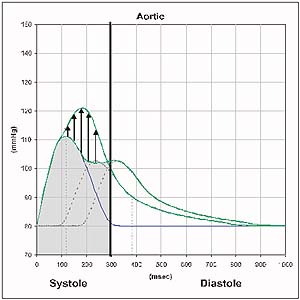
3. Decreased Coronary Artery Perfusion Pressure in Diastole
A reduction occurs in the critical diastole period due to the pressure that is perfusing the coronary arteries. This increases the risk of myocardial ischemias.

PWV Analysis And Exercise
Studies show that physical activity improves elasticity and reduces stiffness in arteries. Not only does exercise have a dramatic impact on arteries on a long-term basis, positive effects are apparent and measurable immediately. Post exercise, the time required for the reflected pulse wave to travel back to the heart is reduced thereby easing the heart’s workload and promoting better overall cardiovascular health. On a long term basis, combinations of aerobic exercise and flexibility activities such as yoga and Pilates have been shown to further improve the elasticity of arteries.
PWV Analysis and Exercise
PWV Analysis provides valuable insight into the effect of exercise on arterial stiffness. Assessing the condition of arteries prior to exercise during exercise, post exercise and after an extended period of time permits simple tracking, monitoring and analysis of vascular health. The data collected during PWV Analysis is useful during the following states:
• Warm up
o Determine the speed at which arteries dilate in response to exercise and pinpoint when the body is properly warmed up and prepared to advance to the next level
• Immediate effects
o Assess how the body responds to increased activity levels and monitor the arterial response to measure the efficiency and efficacy of blood flow
• Post-exercise recovery
o Ascertain the time required for arteries to return to their resting state after activity has been halted
• Long-term effects
o Track improvement in vascular age over period of time based on a prescribed training regimen, lifestyle changes, improved activity levels, etc.
Typical Response to Exercise
Exercise produces a physiological response in blood pressure which can be measured using the augmentation index. During physical activity, the pulse rate increases and the augmentation index decreases. Meanwhile, minimal change is observed in blood pressure during periods of exercise. Once the exercise has ceased, both the augmentation index and pulse rate return to their respective resting values.
The following chart illustrates a typical response to exercise as measured in pulse rate, diastolic pressure and systolic pressure. It also depicts the changes prior to, during and after the activity.
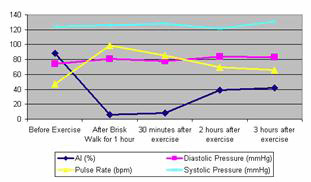
Effect of Warm-Up
An increase in physical activity causes the heart to expel more blood in order to fuel the organs. At the onset of exercise, the arteries have yet to dilate. Subsequently, blood pressure is driven upward as oxygenated blood rushes to supply the organs. This initial imbalance increases the heart workload. This increase causes in activity and spike in blood pressure causes the arteries to dilate in response. The arterial dilation permits more efficient blood flow and allows the heart to effectively deliver blood throughout the body. The arterial dilation also reduces the heart workload which causes the blood pressure to normalize whilst the pulse maintains at an elevated rate.
Effect of Exercise
Physical activity produces significant changes to blood flow and circulation. These physiological changes include the following:
• Increased heart rate
• Change in blood pressure
• Vasodilation
If exercise is not a normal part of the patient’s daily routine, PWV measurements should be performed on the subject while they are in a relaxed, resting state. This will produce the most accurate assessment.
Prior to exercise:
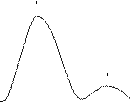
Post exercise:
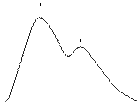
Reviews In Hypertension Research
The following articles and publications provide further research and data into the role of arterial health in cardiovascular health.
“Rediscovering the Arteries”
John R Cockcroft & Ian B Wilkinson (2002) concluded that analyzing arterial stiffness could contribute to the management of cardiovascular disease. Applications for future trial were raised by Laurent et al. (2002) and methods of measuring arterial stiffness were proposed by Mackenzie et al. (2002).
Techniques for measuring arterial stiffness were further discussed by Oliver & Webb (2003) as was their applicability and relation to cardiovascular drugs. These early reviews demonstrated the importance of arterial health and their role in blood pressure determination.
“Hypertension as an Arterial Syndrome”
Izzo (2004) presented the relationship between isolated systolic hypertension and arterial stiffness while Kass (2005) discussed the correlation between arterial stiffness and ventricular function. This subject was further extrapolated by Nichols (2005) and then later by Zieman et al. (2005).
These important developments served as impetus for the release of an expert consensus document (Laurent et al. 2006) on methods and applications of arterial stiffness. Hirata et al (2006). The evidence for arterial stiffness measurement and potential benefits for hypertension treatment based on these findings was discussed, Cohn (2007). Michael F O'Rourke & Hashimoto (2008) published a historical review of arterial stiffness findings and Franklin (2008) indicated arterial stiffness as a new and reliable indicator of cardiovascular disease.
“Treating Arteries to Manage Cardiovascular Risk”
P. Avolio et al. (2009) highlighted the differentiation between central and peripheral blood pressure while Nilsson et al. (2009) proposed managing cardiovascular risk based on vascular age. Combining cuff blood pressure measurement with the new peripheral pulse wave anaylsis was described as the future of blood pressure management by Alberto P Avolio et al. (2010).
The Clinical Problem
According to the latest Global atlas on cardiovascular disease prevention and control published by the World Health Organization (2011), cardiovascular diseases are the leading cause of death and disability in the world. Cardiovascular diseases are defined as diseases and injuries of the cardiovascular system: the heart, the blood vessels of the heart and the system of blood vessels (veins and arteries) throughout the body and within the brain. Risk factors for developing cardiovascular condition include a family history of any of the following:
• Cardiovascular disease or cardiovascular-related death
• Morbid obesity
• Diabetes
• High cholesterol
• High blood pressure
In addition to these hereditary issues, lifestyle plays an important role in the development of cardiovascular disease. Factors such as smoking and a sedentary lifestyle are also known predictors. In the absence of these traditional risk factors, specialists may examine arterial health to evaluate potential for cardiovascular issues.
A high proportion of cardiovascular diseases are preventable, however, measures need to be taken early in order to avert issues. Arteries provide the crucial in-depth window into cardiovascular health to advance treatment. That said, once arteries have become significantly obstructed due to plaque buildup, specialists are limited in their ability to assess their function and structure.
The PWV System enables specialists to evaluate arterial function at an early stage in order identify at-risk patients. Early screening may help in early diagnosis and/or treatment of underlying vascular conditions before they develop into more serious issues. The PWV System also enables specialists to pinpoint issues and achieve a more highly-targeted diagnostic evaluation. Finally, the PWV System enables physicians to monitor arterial health at every subsequent stage to ensure interventions are having the desired effect.
How Cardio Vascular Analysis Helps
Traditionally, cardiovascular analysis is primarily accomplished using measures such as electrocardiograms (ECGs), echocardiograms and stress tests. While these tests are effective in evaluating heart function, their scope is limited to the heart and, as such, these measures do not offer valuable insight into the arteries. Since it is well established that arterial health is intrinsically linked to cardiovascular function, arterial evaluation is the optimal measure.
While arterial evaluation enables a detailed assessment of cardiovascular health, traditional methods of extracting information become compromised in the latter phases of cardiovascular illness. This is due to plaque buildup which threatens the functional and structural integrity of the arteries. The PWV System bypasses arterial obstruction to assess arterial function accurately and easily.
Therefore, cardiovascular analysis via arterial evaluation is significant for the following reasons:
• Clinical investigation into arterial elasticity has successfully identified a correlation between reduced arterial elasticity and eventual cardiovascular events.
• Arterial stiffness is often present even in the absence of traditional risk factors and additional data has successfully linked a loss of arterial elasticity in patients suffering from hypertension, diabetes, heart failure or coronary artery disease.
• Research indicates that subtle changes to arterial elasticity provide invaluable insight into overall cardiovascular condition. Changes in arterial elasticity often precede conditions such as hypertension and diabetes and these changes are reflected in the arterial blood pressure waveform.
• Data suggests that vascular changes precede typical and overt symptoms of cardiovascular disease and the occurrence of heart attacks or strokes by many years. Further, clinical investigations have shown a relationship between the loss of arterial elasticity and aging which suggests that arterial stiffness is an early biomarker for cardiovascular disease.
The PWV System enables easy, noninvasive measurement and analysis of cardiovascular health. The resultant data provides invaluable insight in arterial elasticity, stiffness and vascular changes which are all powerful determinants of cardiovascular events. Clinical analysis allows for early screening, treatment and monitoring of any significant cardiovascular issues.
KEY_Web_Disclaimer
